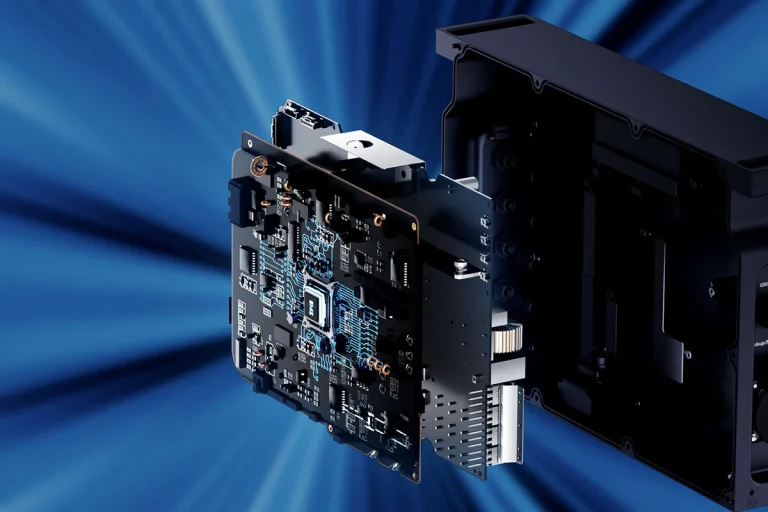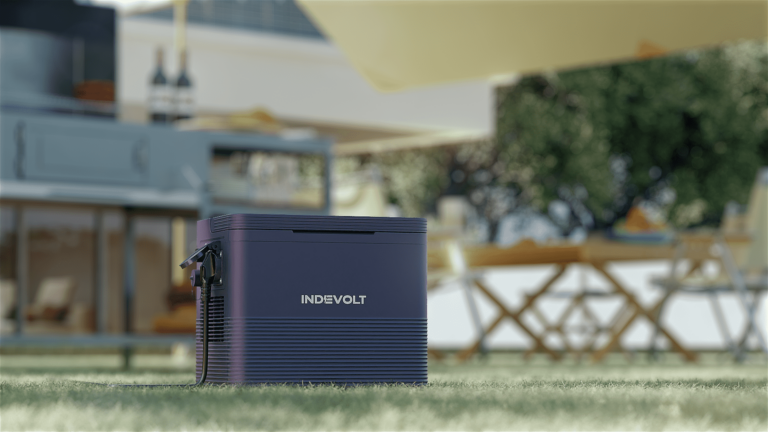Balcony Solar Power System with Storage: Which Cables Are Required?
You’ve decided to get a balcony solar power system with storage and now want to take the next steps toward installation. But then a question arises: Which cables are required?
It’s completely understandable to wonder about this, because the right cables are crucial for the efficiency and safety of your system. If you’re not sure which cables you need and what role they play, you’re in the right place. In this article, I’ll explain in detail which cables are necessary for a balcony solar power system with storage, how to select them correctly, and what to look out for during installation.
We’ll also take a look at why the Indevolt BK1600 is a particularly good choice for your balcony solar power system, and how it simplifies the installation process for you with neat cable management and other intelligent features.
Basics: Why Are the Right Cables Important?
Before we dive into the details, let’s briefly clarify why choosing the right cables is so crucial. In a balcony solar power system with storage, electricity flows from the solar panels through the inverter and battery into your home grid. Different types of electricity (such as direct current (DC) and alternating current (AC)) require different cable types. The quality and cross-section of the cables affect not only the system’s efficiency but also its safety.
But what does this mean for you in practical terms? Quite simply: With the right cables, you can minimize energy loss, save costs, and avoid safety risks.
Which Cables Are Required for a Balcony Solar Power System with Storage?
Installing a balcony solar power system with storage requires different cable types, which vary depending on function and electricity type. Below is an overview of the key cables you need for your system:
1. Solar Cables (DC)
The connection between the solar panels and the inverter is made using solar cables, which are specially designed for transporting direct current (DC). These cables are particularly durable because they are often laid outdoors and must withstand UV radiation and extreme weather conditions.
What should you look out for?
- Weather resistance: Ensure the cable is UV-resistant and suitable for outdoor use.
- Cross-section: A larger cable cross-section (e.g., 4 mm²) reduces voltage loss and ensures more efficient energy transmission.
- Connectors: Solar cables typically use MC4 connectors, which enable simple and safe connections.
2. Alternating Current (AC) Cables
After the inverter converts DC to AC, the AC is fed into your home grid via AC cables. These cables must meet local electrical installation regulations and are usually designed for indoor use.
What should you look out for?
- Power capacity: The cable must be rated for the maximum output of your inverter. For smaller systems, a standard 230V cable is often sufficient, but if you want to operate multiple devices simultaneously, ensure the cable has an adequate cross-section (e.g., 2.5 mm² or larger).
- Protection class: Ensure the cable provides the necessary protection against electrical overload. This also includes proper circuit protection.
3. Battery Cables
A balcony solar power system with storage requires battery cables to transport electricity from the battery to the inverter. These cables must be strong enough to handle the high current flow that occurs when charging and discharging the battery.
What should you look out for?
- Cable thickness: Since batteries often operate with high currents, battery cables should be sufficiently thick (e.g., 10 mm² or larger) to prevent overheating and minimize voltage loss.
- Insulation: Battery cables should be well-insulated, as they are often laid in tight spaces where they may come into contact with other devices.
4. Data Cables and Communication
Modern balcony solar power systems with storage (such as the Indevolt BK1600) often allow monitoring and control via a smartphone or computer. For this, you need data cables or a wireless connection (e.g., 4G or Wi-Fi) to connect the system to your network.
What should you look out for?
- Data transmission: If your system does not offer a wireless connection, you will need Ethernet cables for data transmission. These cables should be at least Category Cat6 to ensure fast and reliable connectivity.
- Future-proofing: The Indevolt BK1600 supports 4G communication, allowing you to maintain a stable connection even without Wi-Fi.
Neat Cable Management with the Indevolt BK1600
One of the main challenges when installing solar systems is often cable management. No one wants a mess of cables that not only looks unsightly but can also pose safety risks. This is where the Indevolt BK1600 comes in—it ensures neat, simple cable management through its smart design and thoughtful solutions.
1. 4-in-1 PV Cable: Neat and Simple Wiring
The Indevolt BK1600 uses a 4-in-1 PV cable, which significantly simplifies and cleans up the wiring. Instead of running multiple cables across your balcony or through your home, this cable bundles the key connections into a single strand. This not only makes installation faster and easier but also creates a tidier appearance.
Advantages of the 4-in-1 PV cable:
- Less cable clutter: Bundling multiple cables into one minimizes wiring.
- Easier installation: Fewer cables mean fewer potential errors and faster setup.
- Safer operation: Reducing the number of cables lowers the risk of cable breaks or short circuits.
2. Support for DC and AC Coupling
The Indevolt BK1600 supports both DC and AC coupling, meaning you can flexibly decide how to design the cable connections in your system. This simplifies integrating your balcony solar power system into existing or new solar setups and makes installation hassle-free.

Which Cables Are Required for Installing the Indevolt BK1600?
Let’s now take a closer look at which specific cables you need for installing the Indevolt BK1600. This is a particularly efficient and user-friendly system, designed for simple installation and high performance.
| Cable Type | Usage | Recommended Cross-Section | Special Features |
| Solar Cable (DC) | Connection between solar modules and inverter | 4 mm² or more | UV-resistant, weatherproof, MC4 connectors |
| Alternating Current Cable (AC) | Connection between inverter and home grid | 2.5 mm² or more | Must comply with local electrical installation regulations |
| Battery Cable | Connection between battery and inverter/PCS | 10 mm² or more | Well-insulated, thick enough for high currents |
Table 1: Required Cables for the Indevolt BK1600 Balcony Solar Power System with Storage
Why the Indevolt BK1600 Is Ideal for a Balcony Solar Power System with Storage
The Indevolt BK1600 not only offers innovative solutions for power storage but also simplifies the entire wiring and installation process. Here are some key reasons why this system is perfect for your balcony solar power setup:
1. Bidirectional Inverter
The bidirectional inverter of the Indevolt BK1600 enables both charging and discharging of the battery. This means you can not only feed power from the solar panel into the battery but also feed stored energy back into the grid or use it for your household appliances.
2. Smart Self-Consumption Mode
With Smart Self-Consumption Mode, the Indevolt BK1600 automatically optimizes your self-consumption. This means you use the generated power as efficiently as possible without needing additional devices or complicated controls.
3. AI-Powered Optimization
The Indevolt BK1600 uses intelligent algorithms to optimize your energy consumption. AI-powered optimization helps you reduce energy costs while maximizing your green power generation. The system independently decides when it is best to charge the battery or use the power.
4. High Conversion Efficiency
With a conversion efficiency of over 98%, the Indevolt BK1600 ensures you can practically use almost all the generated power. This reduces energy loss and increases your system’s overall performance.
5. Off-Grid Power
Another remarkable feature of the Indevolt BK1600 is its 1200W off-grid power capability. This means you can operate powerful devices even during a power outage or in island mode without overloading the system.
How to Install Cables for Your Balcony Solar Power System with Storage
Installing a balcony solar power system with storage requires some planning, but with the right instructions and cables, it’s easier than you might think. Here are the basic steps to follow:
1. Plan Cable Routes
Before starting installation, plan where the cables will run. Ensure they are as short as possible to minimize voltage loss and are laid safely to avoid damage.
2. Lay Solar Cables
Solar cables run from the solar modules to the inverter. Ensure the cables are weatherproof and do not touch sharp edges or objects that could damage them.
3. Connect the Inverter
The inverter is connected to your home grid with AC cables. It’s important to follow local regulations and ensure the cables are appropriately sized.
4. Connect to the Battery
Battery cables connect the battery to the inverter. Ensure the cables are thick enough to safely carry high currents and are well-insulated to prevent overheating and short circuits.
FAQ: Frequently Asked Questions About Cables in a Balcony Solar Power System with Storage
1. Can I Use Normal Power Cables for My Balcony Solar Power System?
No, normal power cables are not suitable for outdoor use or DC transmission. Always use special solar cables that are weatherproof and designed for DC.
2. How Thick Should the Cables Be?
Cable thickness depends on your system’s power. For solar cables, a cross-section of at least 4 mm² is recommended, while battery cables may need to be 10 mm² or more depending on current flow.
3. Can I Lay the Cables Myself or Do I Need an Electrician?
Wiring a balcony solar power system with storage can often be done yourself, especially if you have experience with electrical installations. However, always hire an electrician for connecting to the home grid to ensure all safety standards are met.
4. What Happens If the Cables Are Too Long?
Overly long cables can cause voltage loss, reducing your system’s efficiency. Keep cables as short as possible to minimize these losses.
5. Are the Cables of the Indevolt BK1600 Easy to Install?
Yes, the Indevolt BK1600 offers user-friendly cable management that simplifies installation. Thanks to the 4-in-1 PV cable and support for DC and AC coupling, wiring is quick and neat.
Conclusion: The Right Cables for Your Balcony Solar Power System with Storage
Choosing the right cables is crucial for the efficiency and safety of your balcony solar power system with storage. With the right solar cables, AC cables, and battery cables, you ensure your system works optimally and you benefit from clean, cost-effective energy in the long term.
The Indevolt BK1600 not only provides an intelligent and efficient storage solution but also simplifies installation with thoughtful cable management features. This ensures your balcony solar power system is not only powerful but also safe and easy to install.
If you’d like to know more, feel free to ask!





